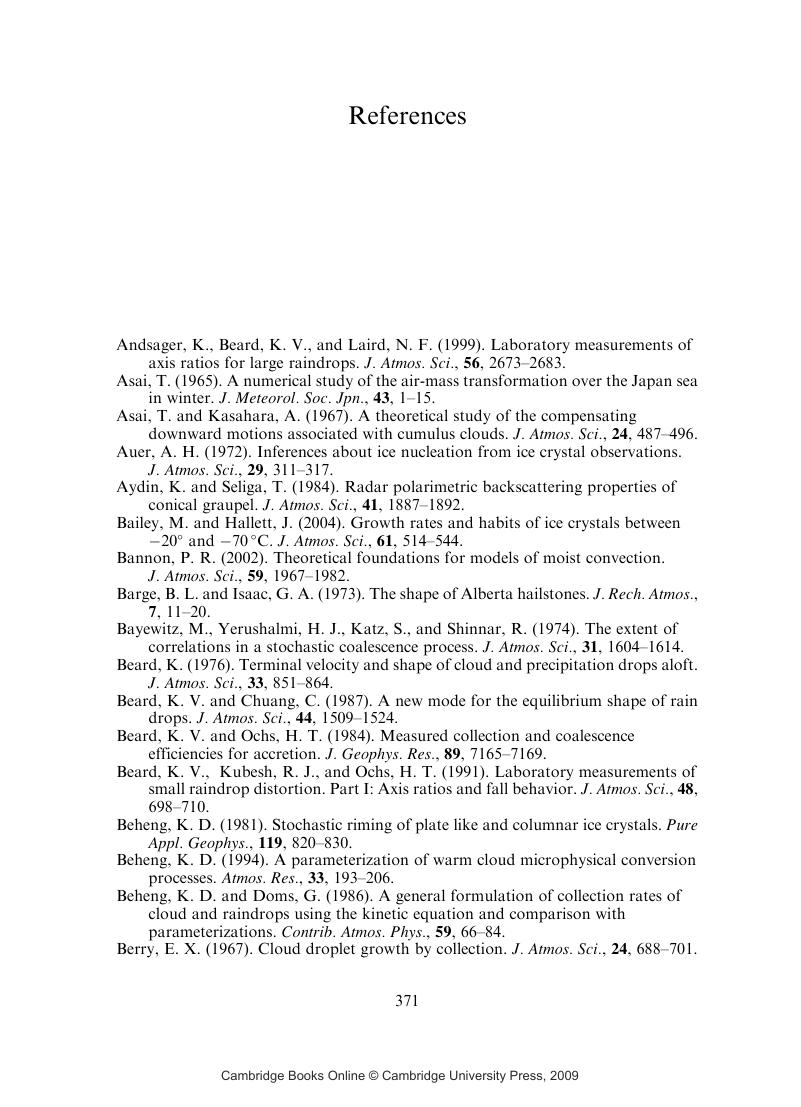Book contents
- Frontmatter
- Contents
- Preface
- 1 Introduction
- 2 Foundations of microphysical parameterizations
- 3 Cloud-droplet and cloud-ice crystal nucleation
- 4 Saturation adjustment
- 5 Vapor diffusion growth of liquid-water drops
- 6 Vapor diffusion growth of ice-water crystals and particles
- 7 Collection growth
- 8 Drop breakup
- 9 Autoconversions and conversions
- 10 Hail growth
- 11 Melting of ice
- 12 Microphysical parameterization problems and solutions
- 13 Model dynamics and finite differences
- Appendix
- References
- Index
- References
References
Published online by Cambridge University Press: 23 November 2009
- Frontmatter
- Contents
- Preface
- 1 Introduction
- 2 Foundations of microphysical parameterizations
- 3 Cloud-droplet and cloud-ice crystal nucleation
- 4 Saturation adjustment
- 5 Vapor diffusion growth of liquid-water drops
- 6 Vapor diffusion growth of ice-water crystals and particles
- 7 Collection growth
- 8 Drop breakup
- 9 Autoconversions and conversions
- 10 Hail growth
- 11 Melting of ice
- 12 Microphysical parameterization problems and solutions
- 13 Model dynamics and finite differences
- Appendix
- References
- Index
- References
Summary

Information
- Type
- Chapter
- Information
- Cloud and Precipitation MicrophysicsPrinciples and Parameterizations, pp. 371 - 384Publisher: Cambridge University PressPrint publication year: 2009
References
Accessibility standard: Unknown
Why this information is here
This section outlines the accessibility features of this content - including support for screen readers, full keyboard navigation and high-contrast display options. This may not be relevant for you.Accessibility Information
- 1
- Cited by
